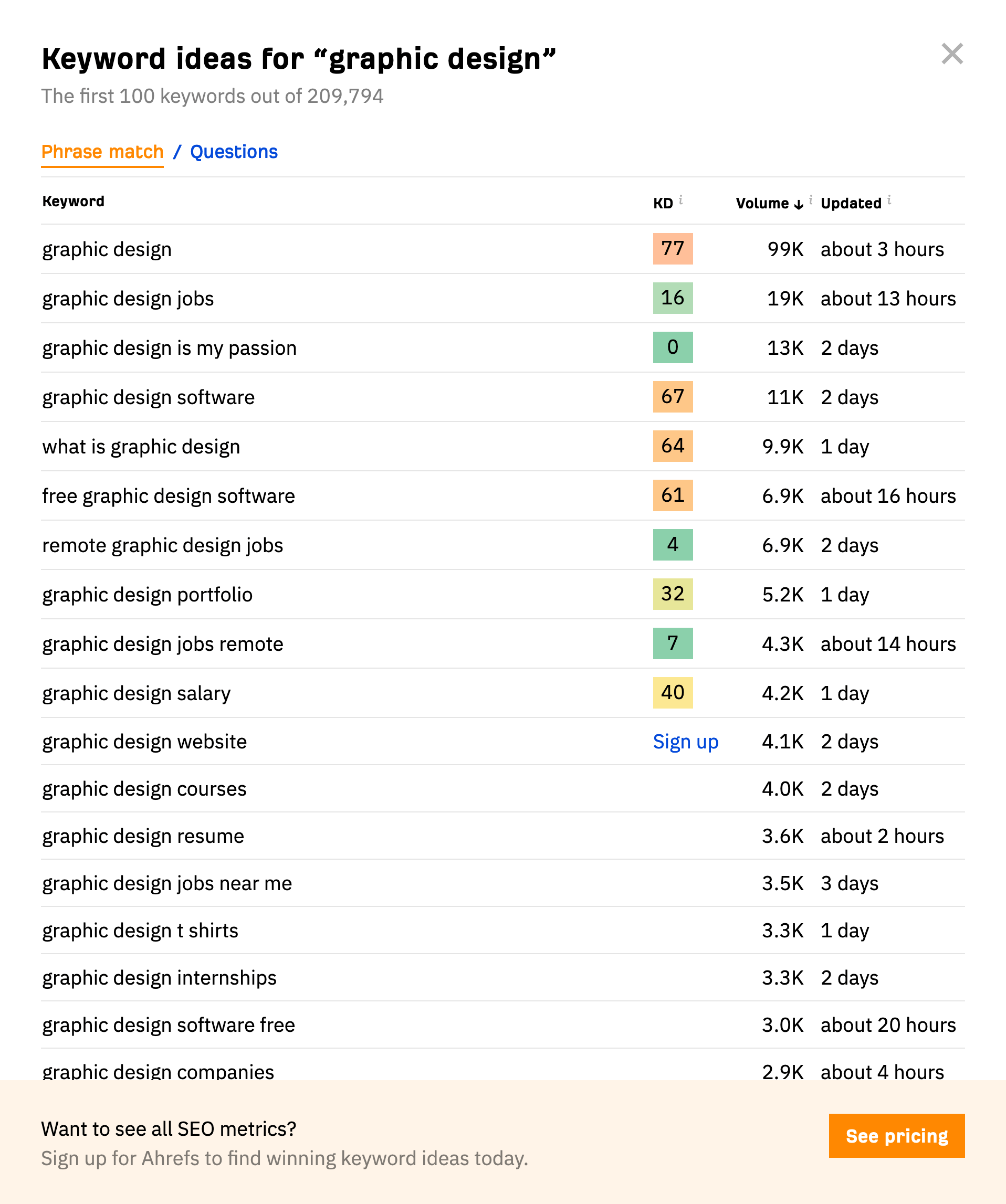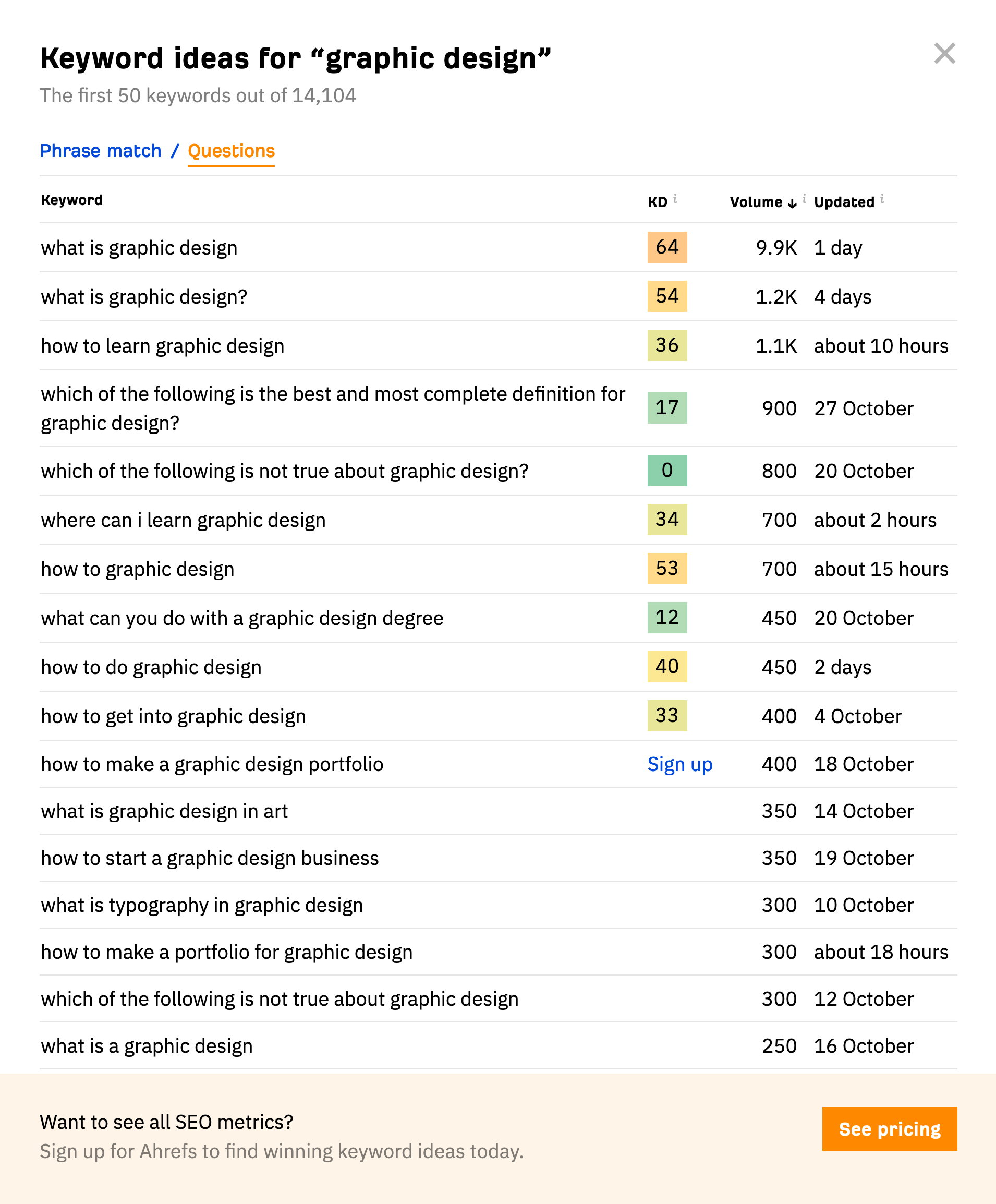How To Find Long-Tail Keywords?
How To Rank High On SERPs Rapidly? Long-Tail Keywords!
In this article, I'll explain how you can find long-tail keywords with the free tool Ahrefs Keyword Generator:
- 1. What Is Ahrefs Keyword Generator?
- 2. What Are Long-Tail keywords?
- 3. How To Find Long-Tail Keywords?
1. What Is Ahrefs Keyword Generator?
Ahrefs is an all-in-one SEO tool to perform keyword research, backlink analysis, competitor research, and website auditing. While Ahrefs is a paid tool, they provide multiple free tools such as Ahrefs Keyword Generator.
Of course, and you know how the software industry works, Ahrefs offer you a limited tool for free, and they want you to pay for the full service. Nonetheless, if you start your SEO journey, you can start your long-tail keyword research with the free version of Ahrefs.
Ahrefs Free Keyword Generator helps you to discover new and relevant keyword ideas as well as their associate data:
- Keyword Suggestions: You can enter a seed keyword and receive a list of related keywords and keyword phrases.
- Keyword Difficulty: It assesses the keyword difficulty to indicate how challenging it may be to rank for those terms.
- Search Volume Data: Ahrefs provides the average monthly search volume for each keyword.
- Language and Location Options: It supports multiple languages and allows you to specify your target location for more precise keyword suggestions.
Note: You can complete your list of keywords by using Google Keyword Planner, but that will be the topic of another newsletter ;).
2. What are Long-Tail Keywords?
Long-tail keywords are specific and highly targeted keyword phrases that typically consist of three or more words.
They often focus on a niche or particular topic. Long-tail keywords are valuable for SEO and content marketing because they attract a more specific and qualified audience, and are often less competitive than broader keywords. Long-tail keywords make it easier to rank in search results and capture users with a particular interest or intent.
Note that by definition, the search volume of a long-tail keyword is significantly lower than that of a short-tail keyword. You trade the quantity of traffic with the quality of traffic.
3. How To Find Long-Tail Keywords?
- 1. Access Ahrefs Free Keyword Generator.
- 2. Select the relevant search engine. By default, Google is selected. You can start with Google.
- 3. Select the country. By default, United States is selected.
- 4. Write a keyword. E.g. “graphic design” 👇

- 5. Review the “Phrase match” results. E.g. “graphic design” 👇

- 6. Review the “Questions” results. E.g. “graphic design” 👇

- 7. Select the keywords that are:
a. Relevant to your content strategy, business, or industry.
b. With a low keyword difficulty (KD), i.e. in green.
c. With a satisfying average monthly search volume (every business is different, assess if the organic traffic is enough for you).
- 8. I recommend you to keep a spreadsheet with all the keyword data you gather from your searches. You can easily set up one in Google Sheet.
- 9. As mentioned above, you can use Google Keyword Planner to complete your set of data.
- 10. Reproduce this entire process for other seed keywords to collect relevant long-tail keywords and their associated data in your spreadsheet.
- 11. Prioritize your keywords. Define which ones you'll leverage first.
Now that you found several relevant long-tail keywords, and if the organic traffic they generate is enough for you, write one article per keyword on your blog.
4 Ways I Can Help You
- 1. Get leads with SEO -> The Complete SEO Course.
- 2. Prefer SEO done for you? Get your free SEO consultation.
- 4. Enjoy my newsletter, blog, freebies, and testimonials.
Latest Blog Articles
EXOGN
Contact Us
EXOGN - SEO Agency & Training
Nicolas Pizzo
24, rue de la Station
94170 Le Perreux-sur-Marne
France
COURSES
SEO
Off-Page SEO
Local SEO
Copyright 2024 EXOGN - SEO Agency & Training


